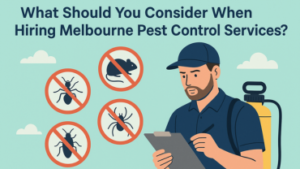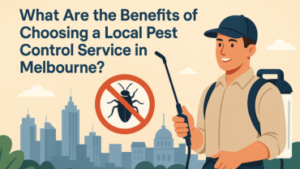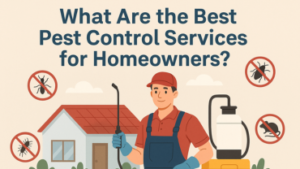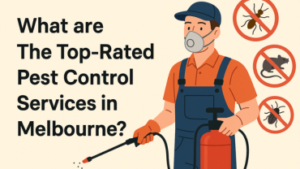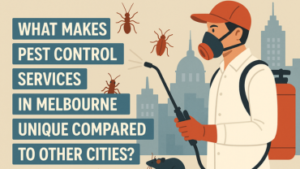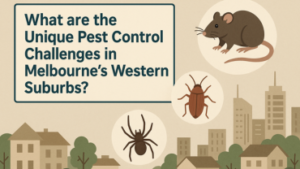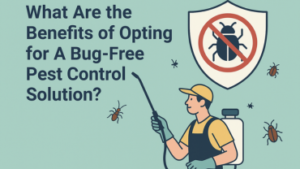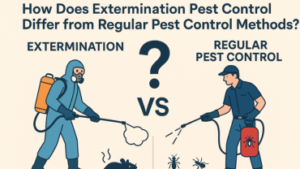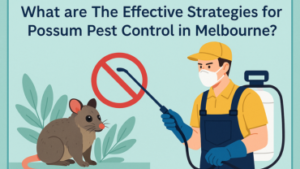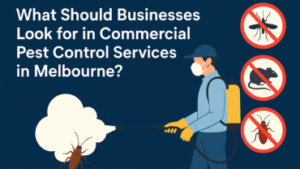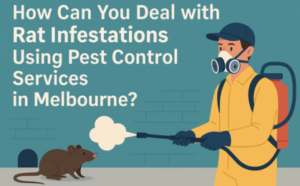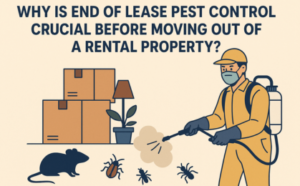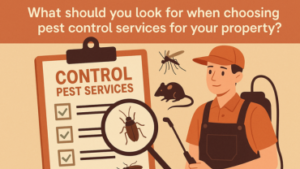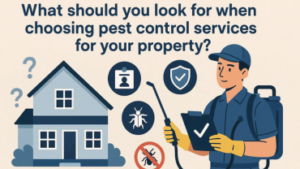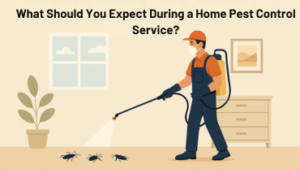Melbourne’s western suburbs are vibrant, growing, and full of life, but they also come with their own set of pest control challenges. From rodents sneaking into new developments to spiders thriving in the urban sprawl, residents here face unique problems that demand expert solutions.
If you’re dealing with unwelcome critters, you’re not alone. The Melbourne western suburbs have specific environmental and structural factors that make them a hotspot for pests. In this guide, we’ll break down the biggest challenges and how Chris Pest Control can help you reclaim your home.
Why Are Pests Such a Big Problem in Melbourne’s Western Suburbs?
The western suburbs of Melbourne are a mix of residential, industrial, and green spaces, creating the perfect breeding ground for pests. Rapid urban development disrupts natural habitats, forcing pests like rats, cockroaches, and ants to seek shelter in homes and businesses.
Additionally, the climate here, warm summers and mild winters, allows pests to thrive year-round. Unlike colder regions where pests die off in winter, Melbourne western suburbs see continuous infestations.
Top Pest Control Challenges in the Western Suburbs
-
Rodents Love New Developments
With constant construction in areas like Werribee, Point Cook, and Hoppers Crossing, rats and mice find plenty of hiding spots in unfinished buildings, pipes, and walls. They’re experts at sneaking into homes through tiny gaps, contaminating food, and even causing electrical fires by chewing wires.
Solution: Sealing entry points and setting up professional bait stations can stop rodents before they become a full-blown infestation.
-
Spiders Thrive in Suburban Gardens
The western suburbs have lush gardens and parks, great for picnics, but also a paradise for spiders. While most are harmless, some, like the Redback and White-tailed spider, can pose health risks.
Solution: Regular yard maintenance and targeted pest control Melbourne western suburbs treatments can keep spider populations under control.
-
Cockroaches Flourish in Urban Areas
Cockroaches love the mix of food waste, moisture, and warmth found in busy suburbs like Sunshine and St Albans. They spread bacteria and trigger allergies, making them more than just a nuisance.
Solution: Sanitation is key, but professional sprays and gel baits are the most effective way to eliminate them for good.
-
Ants Invade Homes Year-Round
Black ants and coastal brown ants are relentless in Melbourne’s west. They march into kitchens, pantries, and even electrical appliances, searching for food and water.
Solution: DIY sprays only kill visible ants, professional barrier treatments stop them at the source.
-
Birds and Possums in Roof Cavities
Indian Mynas and possums often nest in roofs, causing noise, droppings, and structural damage. They’re protected under wildlife laws, meaning removal must be humane and legal.
Solution: Expert exclusion techniques ensure they’re removed safely and prevented from returning.
Climate Factors That Make the Western Suburbs a Pest Hotspot
Melbourne’s western suburbs have a unique microclimate that creates the perfect storm for pest activity. Unlike cooler, wetter regions where pests struggle to survive, the west’s weather patterns, mild winters, hot summers, and fluctuating humidity, give pests a year-round advantage.
-
Warm Summers = Explosive Pest Breeding
Temperatures in suburbs like Werribee, Point Cook, and Sunshine regularly hit the high 30s in summer. This heat accelerates the breeding cycles of:
- Cockroaches (German and American species thrive in warmth)
- Ants (outdoor nests multiply rapidly)
- Flies (who can reproduce in just 7 days under ideal conditions)
The result? A single unnoticed pest can turn into a full-blown infestation in weeks.
-
Mild Winters Mean No Natural Die-Off
While frost kills pests in country areas, western suburbs rarely get cold enough for long enough to disrupt pest lifecycles. Rats, mice, and spiders remain active all winter, seeking shelter in:
- Roof cavities
- Wall voids
- Underfloor areas
-
Unpredictable Rainfall Creates Moisture Havens
The west’s boom/bust rain patterns lead to:
Drought periods – Pests invade homes searching for water (especially rats and ants)
Sudden downpours – Flooded soil drives termites and cockroaches into buildings
-
Coastal Winds Bring Unexpected Invaders
Strong winds from Port Phillip Bay can:
- Blow spiders and wasps into eaves and gutters
- Spread rodent populations between industrial and residential zones
Why This Matters for Homeowners
These climate quirks mean traditional “once-off” pest sprays often fail. Effective control requires:
- Seasonal treatment adjustments (summer vs. winter strategies)
- Moisture control (fixing leaks and improving drainage)
- Preventative barriers (sealing entry points before pests move in)
Why General Pest Control Methods Often Fail Here
Many homeowners try store-bought sprays or traps, only to find pests return within weeks. The problem? Melbourne western suburbs pests are resilient and adapt quickly.
- Over-the-counter products only tackle surface-level issues.
- DIY methods miss hidden nests and breeding sites.
- Seasonal changes require different approaches, what works in summer may fail in winter.
That’s where professional pest control Melbourne western suburbs services make the difference. Experts understand local pest behaviour and use targeted treatments for long-term results.
How Urban Expansion is Fuelling Pest Problems in Melbourne’s West
Melbourne’s western suburbs are booming, new estates in Tarneit, Truganina, and Wyndham Vale are springing up at lightning speed. But this rapid development comes with an unintended consequence: exploding pest populations. Here’s why construction zones are essentially pest welcome mats, and what homeowners can do about it.
-
Construction Disturbs Natural Pest Habitats
When bulldozers clear land for new homes, they’re not just moving dirt, they’re evicting wildlife. Rats, snakes, and spiders that once lived in grasslands suddenly find themselves homeless. Guess where they go next?
- Rodents tunnel into fresh foundations before concrete is poured
- Spiders hitch rides on building materials to new locations
- Possums displaced from trees move into roof spaces of completed homes
Real Example: A new estate in Rockbank saw a 300% spike in rat complaints during its first year of construction.
-
Temporary Food Sources Attract Scavengers
Construction sites are pest buffets:
- Worker lunch scraps feed cockroaches and rodents
- Unsecured dumpsters become rat high-rises
- Standing water in trenches breeds mosquitoes
These pests don’t disappear when the builders leave, they simply relocate to nearby homes.
-
Incomplete Buildings Become Pest Hotels
Half-finished homes with:
- Open wall cavities (perfect for mice nests)
- Unsealed pipes (cockroach highways)
- Exposed timber frames (termite feasts)
Shocking Fact: A single unfinished home can host up to 5,000 German cockroaches in its plumbing voids.
-
Landscaping Choices That Backfire
New developments often install:
- Instant lawns (harbour army worms and lawn grubs)
- Mulch beds (create termite superhighways to your foundation)
- Immature trees (too weak to resist borer beetles)
The Domino Effect on Established Homes
Pests don’t respect property lines. Your brand-new neighbour’s construction site can cause:
- Shared fence lines become rat runways
- Disturbed soil pushes snakes into backyards
- Piled rubble breeds spiders that later invade homes
What Smart Homeowners Are Doing
-
Pre-Construction Defence
- Install rodent-proof mesh under slabs
- Treat soil for termites before landscaping
-
New Home Essentials
- Demand pest-proofing in building contracts
- Schedule professional sprays before moving in
-
Ongoing Protection
- Quarterly perimeter sprays for apartments near worksites
- Roof inspections after nearby demolitions
“We’re seeing clients in growth corridors like Fraser Rise needing pest treatments 3x more often than established areas.”
— Chris Pest Control Field Manager
Don’t Let Progress Become a Pest Nightmare
If you’re in Melbourne’s expanding west, your pest risk just went up. Chris Pest Control specializes in:
- New home pre-treatment
- Construction zone barrier sprays
- Post-development clean-out services
How Chris Pest Control Solves These Problems
At Chris Pest Control, we don’t just spray and leave. We provide tailored solutions based on your suburb’s specific challenges. Here’s how we stand out:
- Local Expertise – We know the western suburbs inside out, so we anticipate where pests hide.
- Advanced Treatments – From rodent-proofing to eco-friendly sprays, we use the latest methods.
- Long-Term Prevention – We don’t just kill pests; we stop them from coming back.
- Emergency Services – Got a sudden infestation? We respond fast.
Don’t Let Pests Take Over—Act Now!
Pests in the Melbourne western suburbs won’t go away on their own. The longer you wait, the worse the problem gets. Whether it’s rats in your walls, spiders in your garden, or cockroaches in your kitchen, Chris Pest Control has the solution.
By addressing these challenges head-on with expert pest control Melbourne western suburbs solutions, you can enjoy a safer, cleaner, and more comfortable home. Don’t settle for quick fixes, choose a team that knows your area and gets results. Chris Pest Control is here to help!

